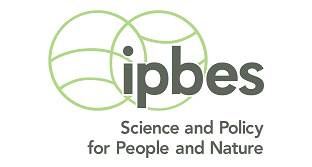Nature Scientific Data, Volume 12, 2025
Aafke M. Schipper, Martijn van der Marel, Michel Bakkenes, Paul Giesen, Mark M. P. van Oorschot, Harry C. Wilting, Mark A. J. Huijbregts & Alexandra Marques
There is an increasing demand for consistent methods and tools to quantify biodiversity footprints: the magnitude of biodiversity loss associated with all direct and indirect impacts associated with a given human activity or economic actor. Here, we present the intactness-based biodiversity impact factors (IBIF) dataset: a consistent set of country-level impact factors that can be used to attribute losses in local terrestrial biodiversity intactness to emissions and resource use associated with production or consumption in a given country.
[...] Read more
Environmental Science & Technology, Volume 59, October 2025
Sedona R. Anderson, Konstantin Stadler and Francesca Verones
Ocean acidification poses a critical threat to marine ecosystems. While life cycle assessment frameworks provide a method for assessing and combatting many anthropogenic impacts, marine impact models remain underdeveloped compared to their terrestrial counterparts. This study presents the first spatially explicit characterization model for quantifying the impacts of ocean acidification that includes both midpoint and endpoint characterization factors (CFs). Midpoint CFs were spatially delineated by using marine ecoregions and Food and Agriculture Organization fishing areas, leveraging spatially explicit fate and fate sensitivity factors.
[...] Read more
Journal of Applied Ecology, Volume 62, April 2025
Liam Vezzani, Aafke M. Schipper, Wilfried Thuiller, Peter H. Verburg, Henrik G. Smith, Alexandra Marques
Pollinators are estimated to benefit the reproduction of three-quarters of global leading crop species and contribute to 3%–8% of the total global food production. Ongoing declines in pollinator populations have raised concerns about repercussions for food security. Thus, there is a need to better understand how agricultural yields depend on pollinator abundance.
Here, we established yield–pollinator relationships for 24 crops, capitalizing on a recently published global database with paired records of crop yield and pollinator abundance. We used linear mixed-effects modelling to relate relative yields to total pollinator abundance, accounting for differences in climate and farming practices.
[...] Read more
Environmental Pollution, Volume 372, May 2025
Māra Deksne, Peter M. van Bodegom, Laura Scherer
Eutrophication results from nutrient overload in aquatic ecosystems and affects primary productivity patterns, which impacts the living conditions of aquatic organisms. The rivers in the catchment area of the Baltic Sea are greatly affected by eutrophication, but impacts on fish functional diversity are poorly understood. This study, therefore, evaluates the effects of freshwater eutrophication on fish functional diversity in the rivers of the Baltic Sea catchment area.
[...] Read more
Jennifer Anderson, Eline Schoonhoven, Peter M. van Bodegom, Laura Scherer
Elisha Wilson, Martin Dorber, Laura Scherer, Alexandra Marques, Francesca Verones
Elisha Wilson, Konstantin Stadler, Francesca Verones, Martin Bruckner
Aquaculture, Volume 600, April 2025
Alejandro Deville, Ian Vázquez-Rowe, Angel Avadí, Fernando Miranda, Ramzy Kahhat
The anchoveta (Engraulis ringens) fishery in Peru, which is almost entirely devoted to the production of fishmeal and fish oil, is one of the largest fisheries in the world. It is volatile in terms of fishing stock availability, and the fishmeal industry has been subject to technological changes to upgrade its efficiency and reduce costs to maintain its competitiveness. The objective of this study is to apply the Life Cycle Assessment methodology to the production and exportation of fishmeal and fish oil products related to a relevant producer in Peru, representing 10 % of national production.
[...] Read more

IPBES (2026)
Rueda X., Jones M., Polasky S., (eds.). IPBES secretariat, Bonn, Germany. Will be released in February 2026. Two BAMBOO members have been lead authors in the report.